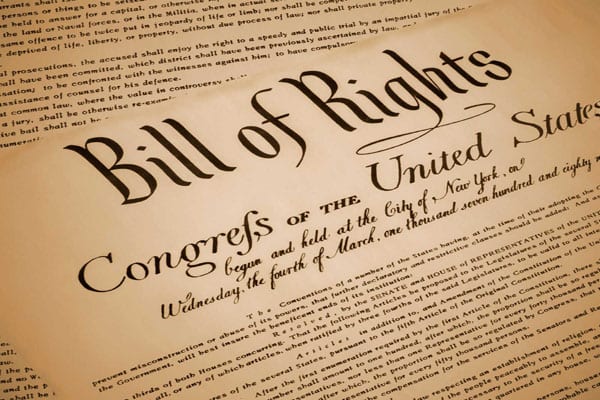
>
Every day, domestic violence shelters nationwide field about 20,000 phone calls from frantic victims. This figure does not include the substantial number of 9-1-1 domestic violence calls, as well as the high number of unreported incidents.
Many of these alleged victims seek judicial protection. A restraining order is much more than just a piece of paper. It gets the full authority of the law on the victim’s side, gives other people notice of the danger, and creates legal obligations for alleged abusers. These individuals usually need their own Hutchinson, MN lawyers to protect their interests.
At Carlson & Jones, we protect domestic violence victims. At the same time, we realize that there are usually two sides to the story. The most effective protective orders take all the facts into account and provide appropriate protections for both alleged victims and alleged abusers.
Orders for Protection
McLeod County courts may intervene in a domestic fight if the applicant qualifies for a protective order from both a relational and physical standpoint.
Typically, the applicant is or was related to the defendant by blood or marriage. So, establishing a relationship is usually not a problem. But sometimes, the domestic ties are not so black and white. For example, a girlfriend may seek protection from her boyfriend. UNder Minnesota law, such protection may be available. However, the nature of the relationship may be an issue. One or two dates probably does not make two people “dating partners” as defined in the Domestic Abuse Act.
Moreover, only physical abuse victims qualify for these protective orders. Once again, in the vast majority of cases, there has been a physical assault. Any harmful or offensive touch qualifies. Physical injury just makes the incident easier to prove in court. The iminent threat of physical violence qualifies as well. But there is a difference between an iminent threat and and idle threat. There’s also a difference between a threat of violence and a fear of violence.
Based solely on the application a McLeod County judge may grant an ex parte order for protection. Then, after the alleged abuser receives notice of the proceeding and has an opportunity to hire a Hutchinson, MN lawyer, the judge may extend the order for up to two years.
This permanent protective order is usually more than preventative. Judges routinely order protective order defendants to do things like pay financial support, surrender their firearms, and vacate a joint residence.
Harassment Restraining Orders
Many times, domestic violence is a slow burn as opposed to a one-time flare-up. In these situations, a harassment restraining order may be available. HROs are designed for situations which may not be physically threatening, but are nevertheless very unsettling for both alleged victims and their families. Such conduct includes:
- Showing up at work,
- Following the alleged victim or a family member,
- Placing repeated phone calls, especially at odd hours, and
- “Checking up” on the alleged victim.
Technically, two incidents are all it takes to establish a pattern. But pragmatically, the more incidents that a Hutchinson, MN lawyer presents to the court, the more likely a judge is to issue an HRO. Diary or journal entries are good; prior 9-1-1 calls or witnesses are even better.
The incidents above are not enough. They must trigger a reasonable fear in the alleged victim. Lack of objective fear is the easiest way for a Hutchinson, MN lawyer to defend alleged abusers against HROs.
Procedurally, harassment orders are much the same as protective orders. The judge may issue an ex parte order based solely on the victim’s testimony. But a judge is unlikely to do so if there are only a few isolated stalking episodes. At a full hearing, the order can include not only anti-stalking provisions, but also language which prohibits the alleged abuser from interfering with utility service or school enrollment.
Out-of-State Protective Orders
The Minneapolis area is basically a regional transportation hub. Lots of people move to Minnesota from other places in the Midwest and other places around the country. If they relocate to escape domestic abuse, their protective orders may be able to relocate with them.
Permanent (non-ex parte) protective orders are almost always transferrable across state lines, as long as a court of competent jurisdiction entered orders that concern domestic violence issues under Minnesota law. The rules differ slightly for MPOs (Military Protective Orders).
Child custody provisions usually remain in place as well, as long as they comply with measures like the Uniform Child Custody Jurisdiction Act (UCCJA) and the ominously-named Parental Kidnapping Prevention Act. So, if a judge gave you custody of your children, you can generally keep them. To change that provision, the alleged abuser would have to petition the issuing judge. McLeod County judges have no power to modify an out-of-state domestic violence order.
It’s also a good idea to enroll your out-of-state order with the National Crime Information Center Registry. The NCIC forwards the order to all state law enforcement agencies.
Work with Experienced Attorneys
Both alleged victims and alleged abusers have legal options in domestic violence situations. For a free consultation with an experienced Hutchinson, MN lawyer, contact Carlson & Jones, P.A. We routinely handle matters in McLeod County and nearby jurisdictions.

